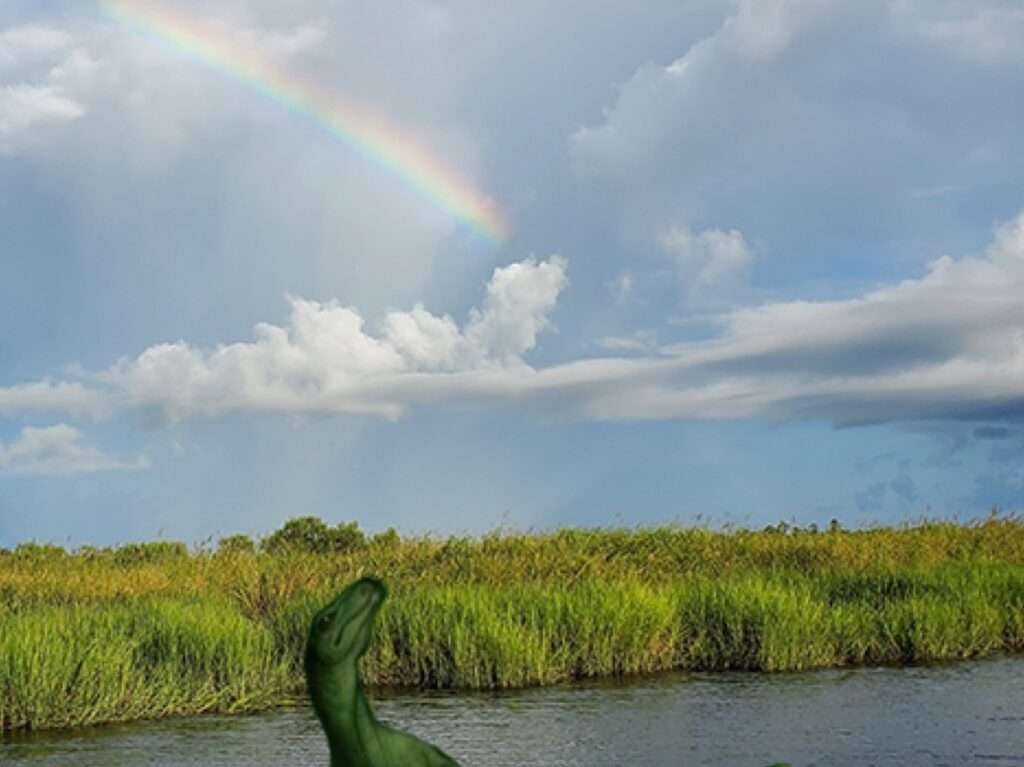The outback is a massive remote area in Northern and Western Australia. The area is sparsely populated and houses some of the most dangerous animals in the world, including the saltwater crocodile. Inside this region though may lurk another creature, one that Aboriginal tribes have told stories about for centuries. The unknown creature is known as the Bunyip.
How is the Bunyip described?
The Bunyip has been described various ways the last few centuries, but the one thing that remains consistent is that descriptions and the stories appear to be ever changing. The animal has been described as having both a round neck and an elongated neck. It’s been described as having a body several different ways, like a hippo, a horse or a manatee.
Still, it typically is reported one of two ways the majority of the time. First, as either resembling a seal or resembling a swimming dog, or second, resembling a long neck creature with a small head. The seal-dog variety is most often seen and is described as being between 4 and 6 feet long with a shaggy black or brown coat. The long-necked version is described as being between 5 and 15 feet long, and is said to have black or brown fur, large ears, small tusks, a head like a horse and an elongated neck about three feet long with a horse-like tail. (Read about the Irish Crocodile Here)
The Bunyip is said to be extremely reclusive, nocturnal and only inhabit lakes swamps and rivers. According to Aboriginal legend, they swim quickly since they have fins or flippers, and have a loud, roaring call.
What they feed on is also a matter of controversy. Some say they only eat crayfish, although many say they are predators and will attack humans, most especially women and children.
Early Sightings
During the mid 19th century when the Europeans arrived there were several important sightings. The Europeans were told of the creature by Aboriginals and anticipated discovering it at some point.
In July 1845, this would be printed in The Geelong Advertiser newspaper under the headline the “Wonderful Discovery of a new Animal”. The article described bones and fossils belonging to a Bunyip, and in the article an Aboriginal man, who had seen many Bunyips, confirmed that the bones belonged to a Bunyip. That dame man was able to draw a photo of a Bunyip and also recalled the story of a woman killed by creature as well as the story of Mumbowran. Mumbowran was a man who showed several deep wounds on his back made by the claws of the bunyip (Read About Canada’s Ogopogo here).
In January 1846, a strange skull was found in Balnarad. Aboriginals identified it as a Bunyip, but it would later be identified by zoologists as a deformed skull of a calf. Still, this event created excitement around the legend in the country.
Perhaps the most famous and legit account of an eyewitness to the Bunyip comes from William Buckley. Buckley was an escaped convict who went and lived with the Aboriginal tribes for 30 years. In 1852 he wrote an account describing the Bunyip. Buckley stated he saw the creature several times. He noted he could never see the whole animal, just the back, which appeared to be covered with feathers of a dusky grey color. He believed it to be about the size of a full-grown calf. Buckley also claimed the creature was common in the Barwon River and tells of an Aboriginal woman being killed by one. According to the Aboriginals, the bunyip was believed to have supernatural powers.

Edwin Stocqueler travelled on the Murray and Goulburn rivers and in 1957 wrote an account of his encounters with the Bunyip. He claimed that the Bunyip was simply a freshwater seal. Stocqueler said the animal had two small paddles or fins attached to the shoulders, a long swan like neck, a head like a dog, The animal is covered with hair, like the platypus, and the color is a glossy black. He said he encountered 6 with the smallest being about 5 feet and the biggest around 15 feet. Stocqueler sketched the animal and showed it to several members of the Goulburn tribe, who declared that the picture was “Bunyip’s brother,” meaning a creature similar to the Bunyip.
Still, one consensus revolves around the creature’s habitat which is said to be almost entirely in water.
Aboriginal stories tell of the bunyip’s connection to a complex spiritual worldview that emphasizes the harmony between people and natural world.
According to the Ngarrindjeri people of southeastern Australia, greed created this monster. According to legend, a man caught more fish than he needed, powerful elders turned him into a half-man, half-fish beast for his avarice(What is the Walgren Lake Monster?)
As time has progressed, the creature’s reputation has evolved from an aggressive minster that punishes those who harm nature, into a mysterious, safe creature. This could be due to many believing the creature is simply spiritual in nature as well as others believing the creature is simply seals that got lost. Whatever, one’s belief, the waters of the outback are already extremely dangerous with Saltwater crocodiles roaming around, so let’s hope this creature, if it does exist is not dangerous.





I appreciate, cause I found just what I was looking for. You’ve ended my four day long hunt! God Bless you man. Have a great day. Bye
I loved up to you will receive performed right here. The cartoon is tasteful, your authored material stylish. nevertheless, you command get got an impatience over that you would like be handing over the following. ill for sure come more in the past once more as exactly the same just about a lot often inside case you shield this hike.
Hey! Would you mind if I share your blog with my zynga group? There’s a lot of folks that I think would really appreciate your content. Please let me know. Many thanks